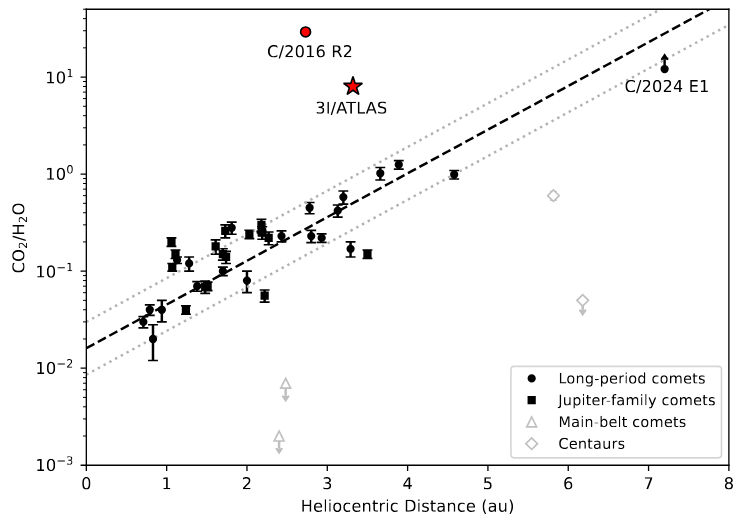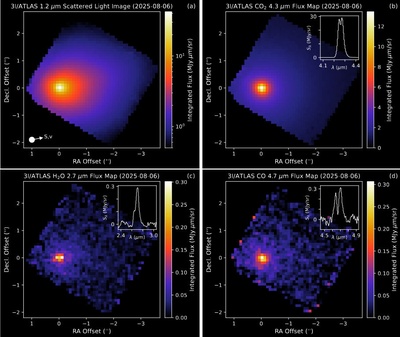Is 3I/ATLAS really a Comet?
The most intriguing mystery in astronomy today is the nature of interstellar object 3I/ATLAS. Most astronomers believe it is a comet. However, iconoclast Avi Loeb of Harvard University makes the case that it might be something else--like alien tech.
Into this debate comes new data from the James Webb Space Telescope. A paper just submitted to the Astrophysical Journal Letters reports that 3I/ATLAS looks like a comet, albeit a strange one. Above are the images from JWST.
The infrared space telescope found most of the ingredients we expect to find in comets. There's a fuzzy coma, volatile ices, and all the usual molecules: water (H20), carbon dioxide (CO2), carbon monoxide (CO). If 3I/ATLAS is a spacecraft, it has an uncanny disguise.
However,
there's also something strange. The ratios of the different molecules
are quite unexpected and don't match what we see in Solar System
comets. In particular, the CO2/H20 ratio of 8 ± 1
is extremely high. Only one other comet, C/2016 R2, is known to have
similar chemistry, and astronomers have long considered it to be a
"freak."
Above: Carbon dioxide-to-water ratios in known comets. 3I/ATLAS does not fit the trend.
Typical comets have a lot more water in their atmospheres, with H20 almost always outnumbering CO2. It could be that water production in 3I/ATLAS has not yet fully "turned on" because it is still too cold. If so, solar heating could restore ratios to normal. 3I/ATLAS will reach its closest point to the sun (1.36 AU) on Oct. 29, 2025, potentially bringing forth a geyser of water vapor to mix with the other gases.
Or, maybe, 3I/ATLAS is just strange--like it came from another star system. Stay tuned for updates.
